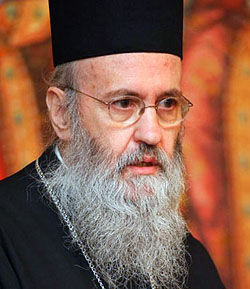The Church as a Therapeutic Center: Soul and Body
9 June 2015 Let me first clarify that in discussing the illness of the soul, we do not mean psychological imbalances, as understood by humanistic psychotherapy, or illnesses originating from disturbances of the nerves and, in general, physical causes. Humanistic psychology talks about the soul outside the Orthodox perspective. So it is necessary to discuss what exactly man’s soul is and what its illness consists of.
Let me first clarify that in discussing the illness of the soul, we do not mean psychological imbalances, as understood by humanistic psychotherapy, or illnesses originating from disturbances of the nerves and, in general, physical causes. Humanistic psychology talks about the soul outside the Orthodox perspective. So it is necessary to discuss what exactly man’s soul is and what its illness consists of.
Man is a psychosomatic being, that is, he consists of soul and body. The soul is not the whole man but just the soul of man; the body is not the whole man but just the body of man. Therefore, man is both, consisting of soul and body.
The spiritual illness of the soul has repercussions to the body, as we can see in the case of Adam’s sin. Corruption and mortality were consequences of man’s sin and of the loss of the Grace of God. Vice versa, the coming of the Grace of God to man’s heart transforms the body, too. We see this in Christ’s Transfiguration, when his face shone like the sun. We see it in Moses whose face was shining, as well as in Archdeacon Stephen, whose face looked like an angel’s face.
Orthodox life aims at the deification of the entire man, soul and body. For this reason, the hesychasm, the neptic[6] theology aims at the simultaneous progression of soul and body to deification. Noetic prayer[7] and ascetic work cannot be interpreted in an Orthodox way, if not viewed through the deification of the human body.
According to the Holy Fathers, man is formed in the image of God. This means that he does not orient his life to himself, but to God. The Word of God is the image of the Father, and man is the image of the Word. Thus, man is an image-being, an image of an image.
Just as God is Triune, man’s soul is triune, that is, it has nous, intelligence, and spirit. The nous is the nucleus of man’s existence, intelligence expresses and formulates the experiences of the nous, and the spirit is man’s noetic love; with the Spirit’s power and energy man is driven toward God.
The soul is single and has many faculties and energies. The Fathers, besides the tripartite division of the soul we mentioned, also accepted a division established by the philosophers: that is, of intelligent, appetitive, and incensive. The first division refers to the ontology of the soul and its pictorial representation, the second one to the passions. Some passions are tied to the intelligent part (pride, atheism, heresy), others to the appetitive part (self-indulgence, avarice) and others to the incensive (wrath, anger, rancor, and so on). Saint Gregory Palamas teaches that ambition is an offspring of the intelligent part of the soul, love of possessions and avarice an offspring of the appetitive part, and gluttony an offspring of the incensive part. The incensive and the appetitive compose the so-called passible part of the soul.
NOTES:
6. Nepsis is the rejection of everything that impedes the mind’s ascent toward God.
7. Noetic prayer is prayer to illumine the nous.
This article was originally published by the Monastery of St. John, www.monasteryofstjohn.org, in The Divine Ascent Vol. 3/4.
This and other publications can be found
on their bookstore website, www.stjohnsbookstore.com.
This article was posted here with permission.






